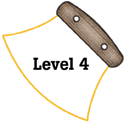
Alaska Science
Key Element D6
 |
Alaska Science |
|
Performance Standard Level 4, Ages 15–18
|
|
|
|
Sample Assessment Ideas
|
Standards Cross-References
|
||
|
National Science Education Standards Formulate and revise scientific explanations and models using logic and evidence. Student inquiries should culminate in formulating an explanation or model. Models should be physical, conceptual, and mathematical. In the process of answering the questions, the students should engage in discussions and arguments that result in the revision of their explanations. These discussions should be based on scientific knowledge, the use of logic, and evidence from their investigation. (Page 175) Recognize and analyze alternative explanations and models. This aspect of the standard emphasizes the critical abilities of analyzing an argument by reviewing current scientific understanding, weighing the evidence, and examining the logic so as to decide which explanations and models are best. In other words, although there may be several plausible explanations, they do not all have equal weight. Students should be able to use scientific criteria to find the preferred explanations. (Page 175) Identify a problem or design an opportunity. Students should be able to identify new problems or needs and to change and improve current technological designs. (Page 192) Propose designs and choose between alternative solutions. Students should demonstrate thoughtful planning for a piece of technology or technique. Students should be introduced to the roles of models and simulations in these processes. (Page 192) Implement a proposed design. A variety of skills can be needed in proposing a solution depending on the type of technology that is involved. The construction of artifacts can require the skills of cutting, shaping, treating, and joining common materials (e.g., wood, metal, plastics, and textiles). Solutions can also be implemented using computer software. (Page 192) Evaluate the solution and its consequences. Students should test any solution against the needs and criteria it was designed to meet. At this stage, new criteria not originally considered may be reviewed. (Page 192) |
Benchmarks Social and economic forces strongly influence which technologies will be developed and used. Which will prevail is affected by many factors, such as personal values, consumer acceptance, patent laws, the availability of risk capital, the federal budget, local and national regulations, media attention, economic competition, and tax incentives. (Page 57) Human inventiveness has brought new risks as well as improvements to human existence. (Page 57) |
|
Table of Contents | Return to Alaska Native Knowledge Network